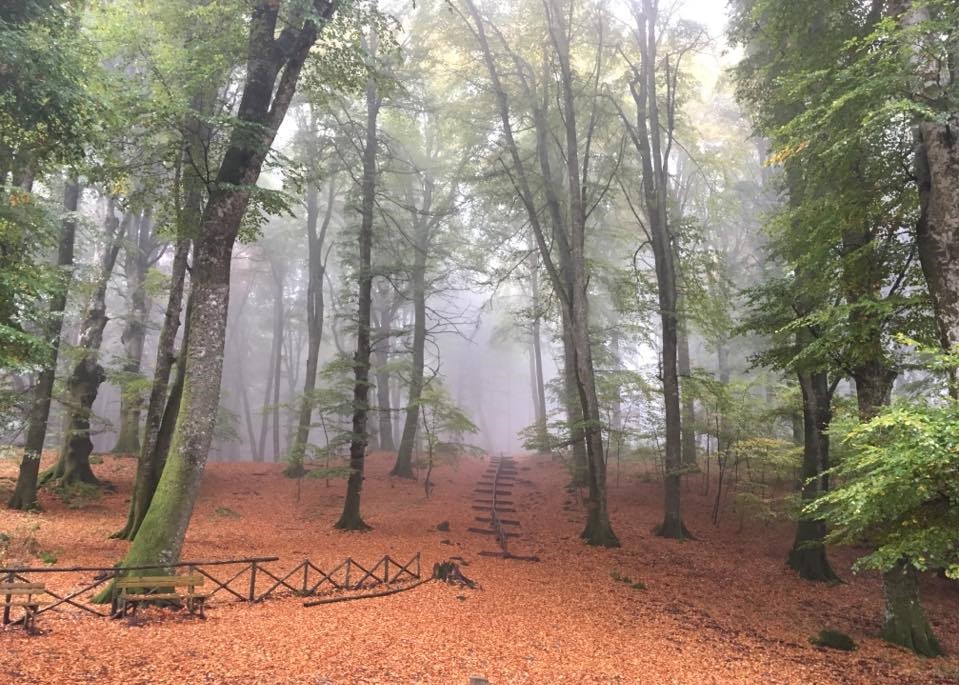
 Italian Botanical Heritage
Italian Botanical Heritage
Italian gardens and parks: The Ancient Beechwood of Mount Cimino
- WTI Magazine #149 Mar 19, 2022
-

 Italian Botanical Heritage
Italian Botanical Heritage
Mount Cimino, with its 1,053 above sea level, is the highest peak of the Lazio Anti-Apennine chain of Cimini Mountains, in the province of Viterbo, in Tuscia. The mountain overlooks the municipality of Soriano nel Cimino, where a wonderful beechwood of 58 hectares extends from 600 to 1053 meters of altitude. Among the most impressive and beautiful beech forests, with ancient trees, up to 50 meters high, in central Italy, since 2017 is part of the UNESCO World Natural Heritage Site.
Wonderful all year round, it offers a network of trails to explore on foot, horseback and mountain bike. In particular, the CAI Section - Italian Alpine Club - of Viterbo has inaugurated the first official CAI trail on the territory of the province of Viterbo with a path of about 14 km, starting from Poggio Nibbio, near Lake Vico, and arriving in Soriano nel Cimino, crossing the Beech forest.
The wood is characterized by the presence of "domi", masses of magma of conical shape surmounted by large rounded boulders, residues of volcanic activity dating back to one million three hundred and fifty thousand years ago, to which we also owe the formation of the "peperino typical of the Viterbese valleys", a stone used for building since ancient times.
The forest has been inhabited since the late Bronze Age (about 1150 BC), during which it was occupied by an important settlement, of which remains, almost intact, the vast perimeter fortification and a small fortified area, identified by archaeologists already around 1890, but scientifically explored only since 1976.
In Roman times, Tito Livio defined the Cimina forest as "impenetrable", so much so that it was able to block the legions of Quinto Fabio Rulliano for a long time, engaged in the conquest of the Etruscan territories, at the end of the 4th century BC.
Throughout the Middle Ages and up to the beginning of 1900, the Faggeta of Monte Cimino was used as pasture for pigs and for the collection of faggiole (the fruits of the beans), used for animal feed, but already in 1800 begins to be recognized as a place of great value landscape and tourism.
From the 1053 meters of the top going down between 950 and 600 meters, the pure forest of beech (Fagus sylvatica) welcomes chestnut trees (Castanea sativa), Turkey oaks (Quercus cerris), black hornbeams (Ostrya carpinifolia) and white hornbeams (Carpinus betulus), in particular on Mount Palanzana and Mount Fogliano. The undergrowth of shrubs and flowers can develop only in the areas where sunlight can penetrate between the crowns of the trees.
The fauna is very rich, including hare, wild boar, hedgehog, dormouse, wild cat, green and red woodpeckers, some small diurnal birds of prey, suitable for fast hunting in the trees as the sparrow hawk and the goshawk, then the buzzard and, on the volcanic rock walls, the kestrel. Several nocturnal birds of prey also live here, such as the long-eared owl, the scops owl, the barn owl and the tawny owl.
Curiosity: the Beechwood has been the set of some famous films, among which Il Marchese del Grillo by Mario Monicelli (1981).